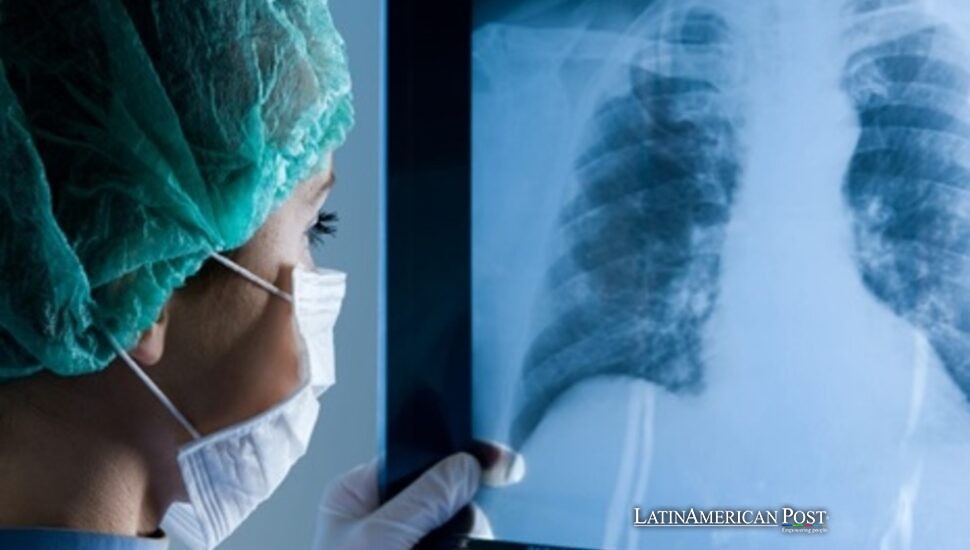Latin American Pulmonary Hypertension Patients Defy Worldwide Expectations

Despite global trends showing older patients with multiple ailments; recent data suggest that many Latin Americans with pulmonary arterial hypertension (PAH) remain strikingly young and largely free of chronic health conditions. Experts debate whether this signals a unique phenotype—or a temporary lag.
A Shifting Demographic Landscape
Pulmonary arterial hypertension once had a label as a disease mainly affecting young women with few other health problems. Patient registries in North America and Europe displayed that doctors discovered the disorder more frequently in older adults in the prior twenty years. With this condition comes a collection of health dangers, such as excess body weight, high blood pressure, and pauses in breathing during sleep. Yet, according to “Pulmonary arterial hypertension in Latin America. The age and comorbidity paradox,” published in the International Journal of Cardiology Congenital Heart Disease, Latin American patient data still paint a different picture.
In countries like the United States, multi-center studies reveal that many PAH patients are now in their fifties or beyond and frequently manage two or more comorbid conditions. By contrast, Latin American registries—drawn from nations including Mexico, Brazil, Argentina, and Colombia—indicate that patients remain relatively young, often in their 30s or 40s, with far fewer accompanying health complications. Researchers are grappling with whether this contrast points to a genuine demographic difference or whether the region is behind current global trends.
Registries Spotlight Young Patients
One possible reason for this phenomenon is the patient referral process within Latin American health systems. Few clinics in many countries have complete PAH diagnostic capabilities, so individuals could go to the specialized centers sooner. This can produce a relatively quick diagnosis when the disease is in its early development.
Patient groups in specific areas frequently show characteristics related to heritage or way of life. Some researchers suggest certain genetic or environmental aspects common in Latin America may change how PAH develops. For example, reports indicate that Hispanic patients in the United States have more serious changes in blood flow and blood pressure when they are younger. This finding resembles information from national records in Mexico.
Latin America’s diversity restricts the present conclusions. Various Indigenous, European, African, and Asian descent blend, producing populations that resist straightforward sorting. Identifying a single “Latin American phenotype” for pulmonary arterial hypertension has problems. Extensive genetic studies are needed.

Adobe Stock
Are We Observing a Different Phenotype or a Delayed Shift?
The notion that Latin Americans might represent a unique PAH phenotype stems from key observations. First, many local registries reveal fewer comorbidities—such as obesity, coronary disease, or diabetes—than those typically recorded in North American and European cohorts. Second, these younger patients often present with more “classic” PAH indicators: lower functional class upon diagnosis, higher mean pulmonary arterial pressure, and distinct hemodynamic characteristics.
Other experts offer a warning. This difference may be a shift that happened later. Many Latin American countries have had diet, lifestyle, and age distribution changes. The changes are similar to ones that high-income nations had many years ago. As obesity rates rise and populations age, the region could soon align with global trends, potentially leading to older PAH patients with multiple comorbidities.
Notably, the incidence of systemic hypertension, obesity, and diabetes is already growing in large urban centers such as Mexico City, São Paulo, and Buenos Aires. People who support the “delayed shift” hypothesis expect regional PAH demographics to change during the next few years. Such a change can reflect the advanced disease states that are now common in Europe and the United States.
Implications for Treatment and Risk Stratification
Another dimension of this paradox revolves around assessing risk and managing treatment for Latin American patients. Established tools—such as the REVEAL, COMPERA, and French registry risk stratification models—were developed from predominantly non-Latin American populations. Nevertheless, preliminary studies suggest these systems can adequately predict outcomes in Hispanic and Latin American groups.
Factual discrepancies emerge in therapeutic response. Some clinical trials have hinted that certain PAH medications (e.g., macitentan or bosentan) may be more effective among Latin Americans than data from other regions might predict. Smaller sample sizes and inconsistent drug availability across countries leave many unanswered questions. For instance, combination therapies are used at notably different rates between Argentina and Mexico, influencing disease progression and survival statistics in ways that are not yet fully understood.
Many investigators emphasize the importance of large, high-quality registries across Latin America. More robust data—especially on genetic makeup, environmental exposures, and comorbidity patterns—could clarify whether these younger, healthier patients truly represent a distinctive subset or if an impending surge in age- and lifestyle-related comorbidities is simply around the corner.
Future Outlook for PAH in Latin America
The spread of PAH around the globe is changing. Latin America is at an important point. At this time, the patients in that region are younger and have fewer long-term illnesses. Some benefits come from this. They include diagnosis at earlier stages, better reaction to medicines, and possibly fewer deaths soon.
Yet signs indicate an eventual shift toward older patients with additional health challenges. Urbanization, shifts in diet, and higher life expectancies will likely amplify the prevalence of obesity, hypertension, and other conditions that worsen PAH outcomes. As such, clinicians, researchers, and policymakers across the region must prepare for a possible escalation in disease complexity.
At present, the “age and comorbidity paradox” points to a pressing requirement for more detailed studies of the interaction among genes, surroundings, and healthcare systems. If Latin America keeps its relatively young patient population or experiences a rapid population change, there will be serious consequences for resource distribution, treatment guidelines, and future health outcomes.
Also Read: Bolivia Wrestles with Turmoil As Arce Bows Out of Election
Note: The data supporting this feature article come from “Pulmonary arterial hypertension in Latin America. The age and comorbidity paradox,” published in the International Journal of Cardiology Congenital Heart Disease. The study’s researchers were Tomas Pulido, Sofia de la Cruz-Perez, Daniela Valencia, Rafael Conde, Adrian Lescano, and Nayeli Zayas.Bolivia Wrestles with Turmoil As Arce Bows Out of Election





